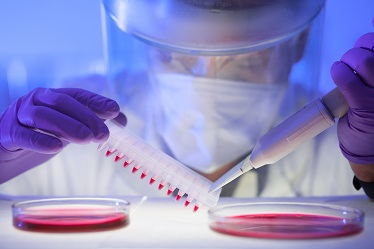New technologies for disease indicator identification

Related topics
Health Innovation Health, Demographic Change and Wellbeing Finland Greece Italy Netherlands Sweden United Kingdom Taiwandate: 27/02/2014
Project: Genomics biomarkers of environmental hea...
acronym: ENVIROGENOMARKERS
See also: CORDIS
Contact: Contact
The European Union (EU)-funded EnviroGenomarkers project carried out the first wide-reaching population study of this type using omics. The study used pre-existing biological samples (blood fractions) from biobanks across Europe, which typically date back to nearly 20 years ago and were collected from people who were healthy at the time.
The EnviroGenomarkers researchers selected such samples from nearly 1,000 persons , of whom some subsequently developed a disease (breast cancer or non-Hodgkin’s lymphoma) and some remained cancer-free, and analysed them using multiple omics technologies. In addition, the project team analysed children’s blood samples from a biobank in Crete, Greece.
“We wanted to know what impact exposure of pregnant mothers to environmental chemicals has on their children’ early pathology,” explains project coordinator Prof Soterios Kyrtopoulos from the National Hellenic Research Foundation in Greece.
The researchers went on to compare the omic profiles of those who did develop disease with those who did not. In this way they were able to discover markers that predicted the future onset of disease, especially chronic lymphocytic leukaemia (a sub-type of non-Hodgkin’s lymphoma). “Even when they were still ‘healthy’, the blood of those who became sick had already undergone changes that predict the development of the disease,” says Prof Kyrtopoulos.
By running certain blood analyses, medical staff can identify people who are at high risk of chronic disease and early detection of appropriate markers would allow individuals to take precautionary actions. “There are certain combinations of signals in blood cells that act as warnings of high risk of disease,” he adds.
Using the same samples the project team also measured the concentrations of toxic chemicals to which people had been exposed. They then searched through the omics profiles for signals that are associated with these ‘exposures’. Any overlap between such signals and those found to predict cancer risk might suggest a possible link between the particular exposures and the causation of the disease and would provide valuable information on the underlying biological mechanisms.
Omics technologies are central to developing this type of approach to biomarker discovery since they allow researchers to screen very large numbers of signals in a given sample for predictive markers. “They do not measure the expression of one or two genes that might be related to the development of a disease, but the expression of all 25,000 or so genes in one go – and this means that we do not have to make a prior hypothesis,” affirms Prof Kyrtopoulos.
While these technologies are being used extensively in the context of disease diagnosis and characterisation, they had so far not been used in population studies that aim to link environmental exposure with disease.
“It is no good trying to understand the risk of a disease by measuring if people are exposed to chemical A or B because people are exposed to lots of chemicals throughout their lives. If we want to understand disease determinants, we need to have this global view of exposure as well. Such an approach that incorporates omics technologies has been called ‘exposomics’,” explains Prof Kyrtopoulos.
The use of omics to study complex exposure and their associated disease risks, as performed in EnviroGenomarkers, is highly innovative. “This project was a kind of pilot exposome project, the first in Europe that tackled the idea of the exposome,” he adds.
“The European reach of the project was vital,” comments Prof Kyrtopoulos. “We were able to bring together expertise from labs in different countries and access samples stored in biobanks in different European regions. The European involvement allowed us to select the best research groups and enabled us to have samples from all corners of Europe,” he concludes.
